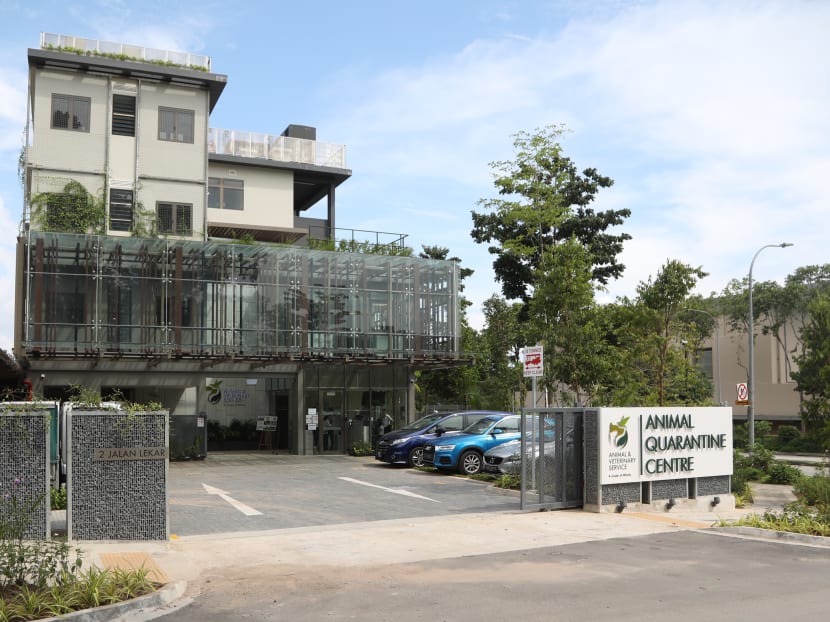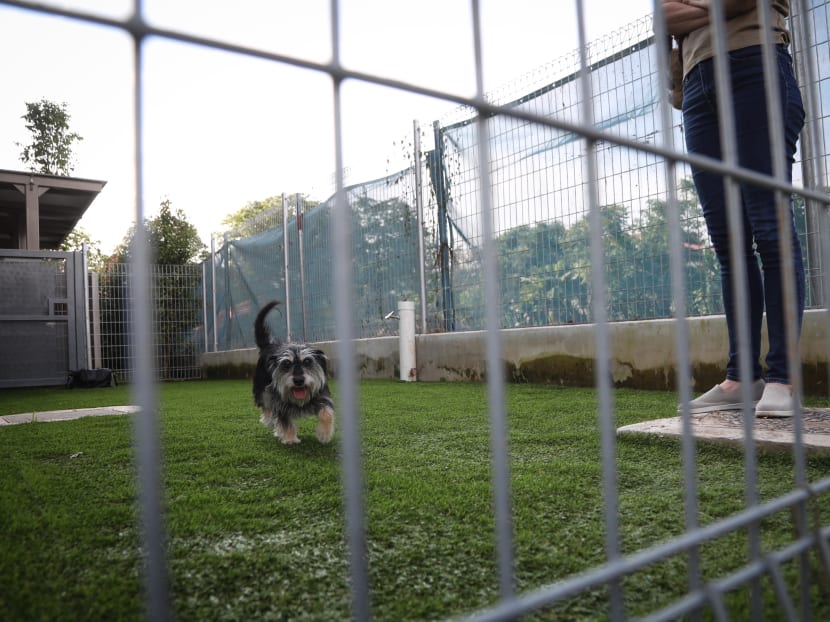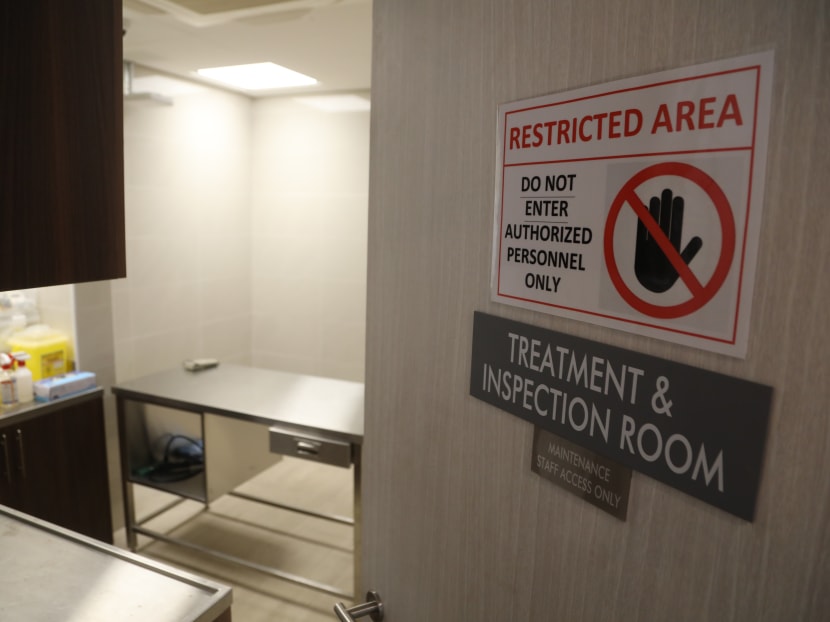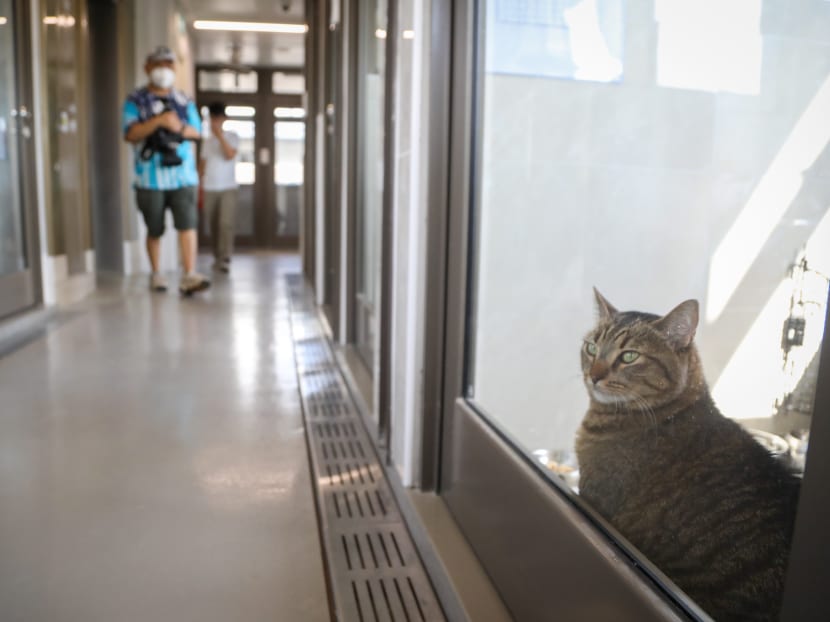New and improved animal quarantine centre near Chua Chu Kang to better monitor imported pets’ health
SINGAPORE — A new animal quarantine centre with improved facilities opened on Friday (Nov 26) and will serve to better monitor the health of imported cats and dogs. Located at Jalan Lekar off Old Choa Chu Kang Road, the facility replaces the previous one located in Sembawang that had stopped operating at the end of last month.
- A new quarantine centre for imported pets has opened near Chua Chu Kang
- The centre is run by the Animal and Veterinary Service under the National Parks Board
- It has CCTVs in every kennel and cattery so that workers may quickly attend to sick animals
- It will also use video analytics to alert if the animals get too close to each other during quarantine there
SINGAPORE — A new animal quarantine centre with improved facilities opened on Friday (Nov 26) and will serve to better monitor the health of imported cats and dogs.
Located at Jalan Lekar off Old Choa Chu Kang Road, the facility replaces the previous one located in Sembawang that had stopped operating at the end of last month.
The new Animal Quarantine Centre, which is run by the Animal and Veterinary Service (AVS) under the National Parks Board (NParks), has technological improvements that help to monitor the health condition of animals and ensure their comfort.
These include having more closed-circuit televisions (CCTVs) that are set up at enclosures as well as video analytics to ensure that pets and their owners keep a distance during their walks.

Speaking during the opening of the facility, Mr Tan Kiat How, Minister of State for National Development, said that the centre plays an important role in preventing infectious diseases from being introduced into Singapore through animals.
“Having two dogs at home, I can appreciate that the separation between owners and their pets during the quarantine process can be quite difficult for both parties.
“With this in mind, we have designed the centre to improve the comfort and welfare of quarantined animals. We have also implemented new measures and technology to enhance our animal quarantine processes,” Mr Tan said.
NEW FEATURES
With 92 kennels and 48 catteries, the new centre can accommodate about the same number of animals as the previous one in Sembawang.
Newly arrived personal pets or commercial pet imports that come from countries with a high risk of disease are quarantined at the centre.
Unlike the old one, which only had CCTVs in common areas, the new centre will have a CCTV in every kennel and cattery.
This is so that staff members may detect signs of illnesses more quickly based on the behaviour of animals or identify kennels or catteries that require more cleaning, AVS said in a press release on Friday.

The new facility will also use CCTVs and video analytics to ensure that pets keep at least a metre apart when their owners take them out to walk or exercise around the compound or on the dog fields.
Speaking during a briefing to the media, Dr Chua Tze Hoong of AVS explained that it was important for animals to keep apart to prevent infections from transmitting.
At the old centre, staff members would manually supervise and remind pet owners to keep their animals apart from one another.
Dr Chua, group director for industry and biosecurity management in AVS, said that now, the centre at Jalan Lekar will rely on video analytics to measure the distance between the animals.
If they are less than a metre apart, a recorded message will be played to remind them to keep their distance. Workers will also be around to remind visitors to stay apart.
The quarantine centre is also planning to conduct environmental air sampling up to twice a week to identify the presence of respiratory diseases that spread quickly through the air, such as canine and feline influenza, AVS said in a news release.
The previous centre did not conduct air sampling.

AVS said that it will also issue smart collar tags for animals eligible for home quarantine. Such animals are typically those with pre-existing medical conditions that require round-the-clock care by their owners.
Right now, AVS officers conduct ad-hoc house or video calls to ensure that animals are quarantined at home, but with the tags, officers will be alerted if the animals leave their premises.
The use of the tags will progressively be extended to cover the quarantine of animals imported from lower disease-risk countries as well, AVS added.
CHECKING ANIMAL IMPORTS AT SEA
Mr Tan told reporters that the Government is strengthening its bio-surveillance capabilities through the use of technology.
This includes using CCTVs and drones fitted with thermal cameras to inspect imported pigs on shipping vessels before they reach Singapore’s shores.
During the briefing, Dr Chua explained that the vessel crew must turn on the CCTVs aboard their boat upon entering Singapore’s waters. AVS officers will look out for indicators of diseases among the pigs through the livestream from drones or CCTVs.
These indicators could be a significant number of deaths among the live pig stock or lameness among the pigs.
The new method will help to reduce the occupational hazards that AVS officers are now exposed to when doing manual checks on board boats, Dr Chua added.
These hazards include exposure to weather elements or Covid-19 when coming into contact with foreign crew.
At the centre’s opening, Mr Tan also announced that AVS is building an information system that consolidates animal health-related data into a central database.
The system, to be set up by 2024, will contain data such as animals’ health status, licensing, inspection and feedback collected from the import and export of animals and animal-related establishments such as pet shops.
“This will help us better identify potential biosecurity threats from animals coming into Singapore,” he said.









